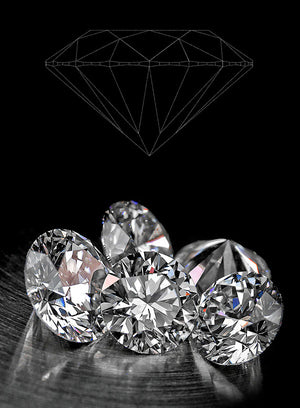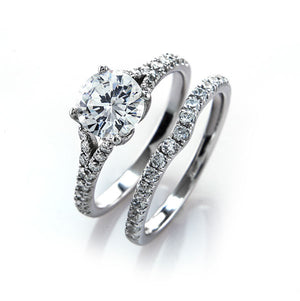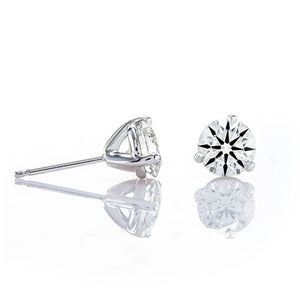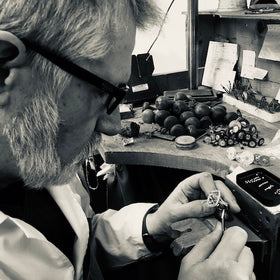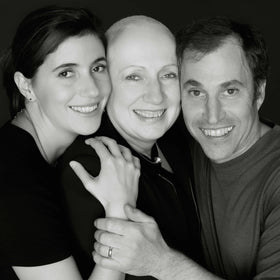How many facets does a Brian Gavin Signature Round Diamond have?
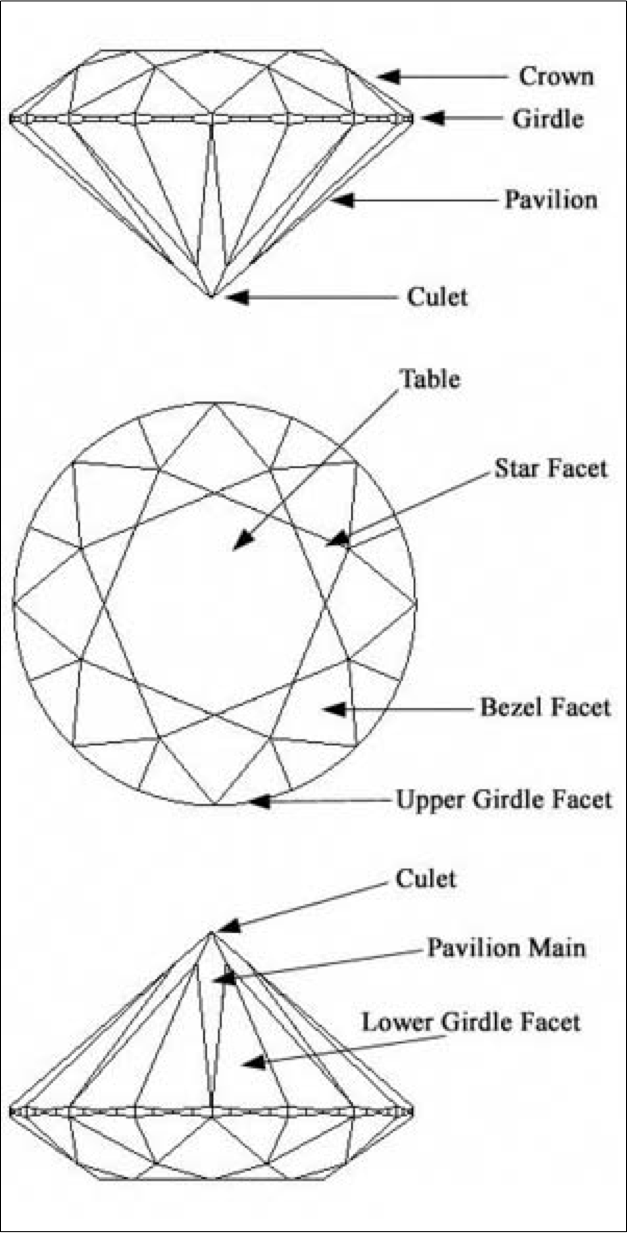
Our Brian Gavin Signature Round Brilliant Ideal Cut Diamonds are based on the design of the modern round brilliant cut diamond which features 57 primary facets and a bottom point which is known as the culet
Facet Design of a Round Brilliant Cut Diamond:
The diagram pictured to the left provides a visual representation of a round brilliant cut diamond. The entire upper half of the diamond is known as the crown, the middle segment is called the girdle edge, and the entire lower half is known as the pavilion of the diamond, the bottom point is called the culet.
Every diamond contained in the Brian Gavin Signature Collection has been optimized for maximum light return by ensuring that the crown angle is cut to the correct offset for the pavilion angle, this ensures that the two primary reflective surfaces, or "mirrors" of the diamond, are angled at each other so that they reflect as much light as possible back up towards the person viewing the diamond.
Once that is achieved, we polish 57 facets on to the surface of the diamond, as indicated on the diagram to the left. The table facet is the largest facet, it is positioned at the top of the diamond, in the center of the crown section. It is surrounded by (8) triangular star facets, which separate (8) kite shaped bezel facets, which are separated along the top of the girdle edge by sixteen elongated triangles known as the upper girdle facets.
On the lower half of the diamond, which is known as the pavilion, there are (16) lower girdle facets and (8) pavilion main facets. If you look carefully at the diagram pictured above, you will see how those two sections of facets line up with the bezel facets and upper girdle facets located within the crown section.
Hearts & Arrows Diamonds:

The hearts and arrows pattern which is visible in all of our Signature Round Diamonds is produced by extremely precise three dimensional alignment of the facets described previously.
The hearts pictured to the left are created by a combination of the pavilion main, lower girdle, table facet and the star facets. If a single facet is mis-shapen or mis-aligned, the pattern will not appear correctly.
Thus it takes an incredible amount of skill and planning to produce our Signature Hearts and Arrows Cut Diamonds, but it is well worth it, because each of them exhibits a superior amount of light return and sparkle factor when compared to other round brilliant ideal cut diamonds.
Do More Facets Equate to More Sparkle?
A popular trend in diamond cutting is to modify the traditional design of a round brilliant cut diamond by increasing the number of facets cut on to the surface of the diamond. The premise behind this practice is the concept that more facets will create more points of sparkle, however this is not something which we support.
If you look carefully at the picture of the diamond featured above on the right side of the graphic, you will see reflections of facets being created within facets, these are called "virtual facets" and they produced "on the fly" as one facet shape passes over another while the diamond is in motion.
Most of the modified round brilliant ideal cut diamonds which feature a higher number of facets, have been created by splitting apart and changing the shape of existing facets that are part of the design of the modern round brilliant cut diamond.
By splitting apart the facets into additional sections, the cutter increases the number of facets of a round brilliant cut diamond from 57 to other combinations, such as 81, 101, 110 and so on, which seems to increase the sparkle of the diamond.
However what actually occurs is that the number of virtual facets is reduced, and the size of the virtual facets is reduced, and thus the diamond produces smaller flashes of light, which our eyes interpret as sparkle. The challenge with smaller flashes of light, is that they tend to be too small for our eyes to interpret as colored light, thus the flashes of light appear to our eyes as white sparkle, known as brilliance, which is why these diamonds are promoted as being "brighter" or "more brilliant" than traditional round brilliant cut diamonds.
We like to produce round brilliant cut diamonds that display a balance of brilliance, dispersion (fire) and scintillation, thus cut our round brilliant cut diamonds with 57 facets, instead of modifying the facet structure to include a higher number. An extensive study titled "The Sparkle Factor" published by the American Gem Society Laboratory (AGSL) supports the importance of maintaining the 57 facet design of our round brilliant cut diamonds.





